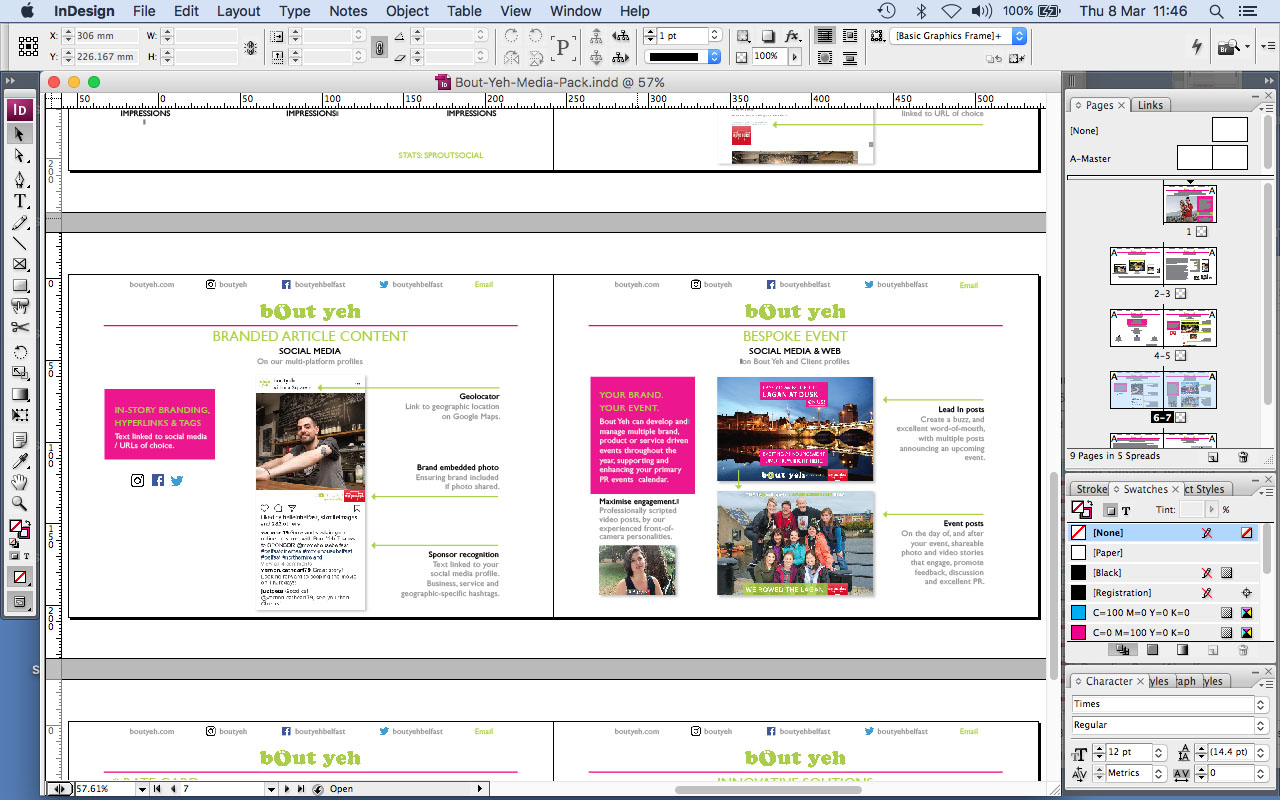Apple Mac Os X 10.6.8, Apple Mac OS X 10.7 Adobe Indesign CS6 for Mac full retail & genuine with verified available activation slot This is a retail Adobe Indesign CS6 for Mac. For example, if you’re creating a computer manual, you can create separate conditions for Mac OS and Windows. Before you print the Mac OS version of the user guide, you can show all text to which the “Mac” condition is applied and hide all text to which the “Windows” condition is applied.
You can edit text in InDesign either on the layout page or in the story editor window. Writing and editing in a story editor window allows the entire story to appear in the typeface, size, and spacing that you specify in Preferences, without layout or formatting distractions. The Story Editor is also where you can view track changes to text. Each story appears in a different story editor window.

All the text in the story appears in the story editor, including overset text. You can open several story editor windows simultaneously, including multiple instances of the same story. A vertical depth ruler indicates how much text is filling the frame, and a line indicates where text is overset. When you edit a story, changes are reflected in the layout window. Open stories are listed in the Window menu.
You cannot create a new story in a story editor window. • With the story editor active, choose View > Story Editor > Show Style Name Column or Hide Style Name Column. You can also adjust the width of the style name column by dragging the vertical bar. Subsequent story editor windows have the same column width. • With the Story Editor active, choose View > Story Editor > Show Depth Ruler or Hide Depth Ruler.
• With the Story Editor active, choose View > Story Editor > Expand All Footnotes or Collapse AllFootnotes. • With the Story Editor active, choose View > Story Editor > Show Paragraph Break Marks or Hide Paragraph Break Marks. Conditional text is a way to create different versions of the same document. After you create conditions, you apply them to ranges of text. You can then create different versions of documents by showing and hiding conditions.
EditPad Lite preserves the compatibility of all files you edit with the legacy systems that may still be using those files. You can convert between any two encodings listed below. Free download convert hex number to ascii in c for mac pro. EditPad Lite reads and edits files in their original encoding. EditPad Lite only converts a file's encoding if you explicitly ask it to. This allows EditPad Lite to open huge files instantly.
For example, if you’re creating a computer manual, you can create separate conditions for Mac OS and Windows. Before you print the Mac OS version of the user guide, you can show all text to which the “Mac” condition is applied and hide all text to which the “Windows” condition is applied.
You can then reverse the condition states for printing the user guide for Windows. Define how many versions your finished project will contain.
For example, if you’re creating a manual that describes a program that runs on both Windows and Mac OS platforms, you might want to produce at least two versions: a Windows version and a Mac OS version. If you want to produce these versions with editorial comments sprinkled in the text during the review process, you’ll want even more versions: Mac OS with comments, Mac OS without comments, Windows with comments, and Windows without comments. For documents with many conditions, you can define condition sets that can be applied to the document for quick versioning. Decide how many condition tags you need to produce the desired versions. A version of a document is defined by a unique set of condition tags. For example, a version of a finished Windows manual might be defined by having a Windows condition tag showing, a Mac OS condition tag hidden, and a Comments condition tag hidden. In this example, you would need to decide whether to use one condition tag for Windows comments and another for Mac OS comments, or whether to use a single condition tag for both Windows and Mac OS comments.
Evaluate the extent to which the document can be conditional and how you can organize the material to simplify development and maintenance. For example, you might be able to organize a book so that conditional text is limited to a few documents.

 0 kommentar(er)
0 kommentar(er)
